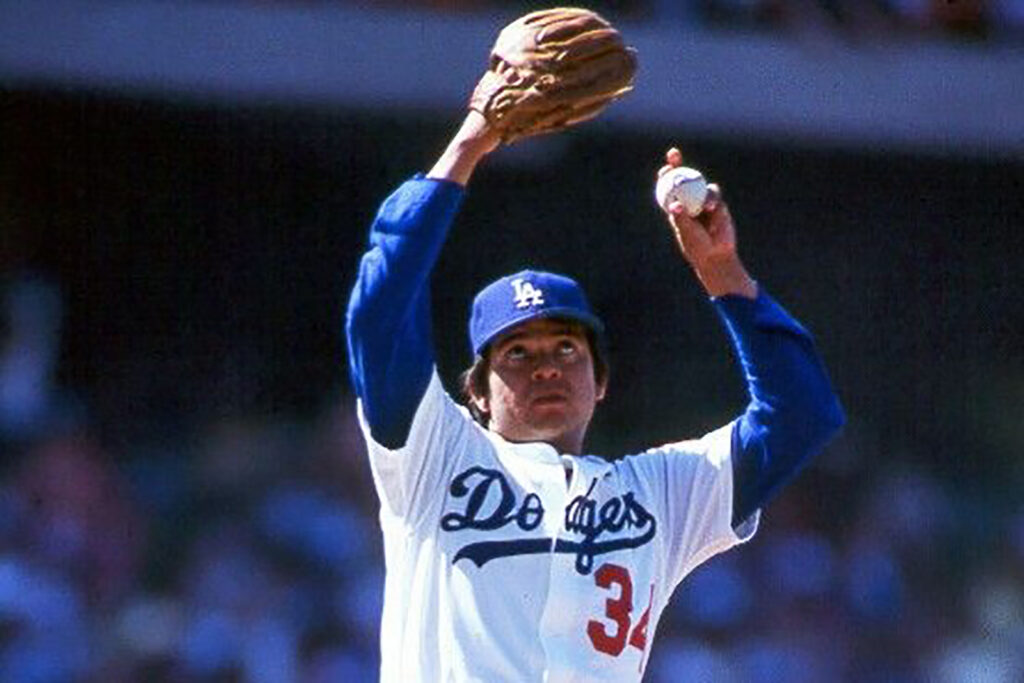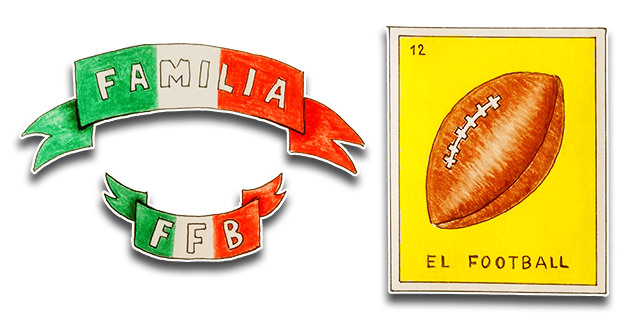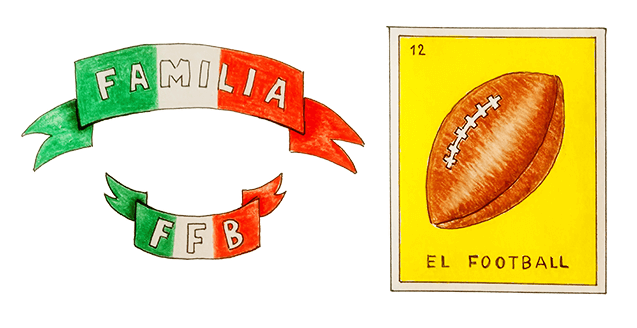I don’t think of Fernando Valenzuela being born so much as he was touched by the heavens and his left arm was turned into an artistic masterpiece as beautiful and creative as any work of art or a classic piano concerto.

That may sound like hyperbole, but it’s warranted. Because in 44 years of following baseball, and avidly reading about the sport’s history, I can honestly say that there has been nothing like Fernandomania in 1981. Not even close. Nada.
“If I would have taken a script about a 20-year-old kid living in a poor village in Mexico coming to the Major Leagues and becoming an international star, any Hollywood producer would have turned me away and said that it was too unbelievable,” said Mike Brito, the man who discovered Fernando, in an interview we did in 2006. “But it was so true.”
I think back to that time. 1981. The internet was the stuff of Sci-Fi. Sports talk was relegated to the post-game show after the game. Newspapers and their legion of writers and columnists were the leading voices. I was 13, the son of Mexican immigrants, inhaling American culture while holding close to my heart mi raza Mexicana. Fernando represented more to me and those like me.
He’d made some waves the previous September, when he was called up to pitch as a 19-year-old, plucked from Double-A. I didn’t realize that only a couple years prior he’d been pitching in the Mexican League, and not long before that he was living in a dirt-floor home with his parents and 11 siblings in the little town of Etchoaquila, Mexico. What I knew was that this kid had the same heritage as me and so many others living throughout Los Angeles.
I still revel with awe in what happened the first couple months of the 1981 Dodger season. The day before Opening Day, Jerry Reuss was doing a running drill when he pulled his calf. Other options for the opener were injured. And throwing batting practice at that moment was Valenzuela himself.
It didn’t matter. There were 50,511 people in the stands on April 9, 1981, and Fernando was the maestro, dazzling the crowd and baffling the Astros with an average fastball that he located with precision, a good curveball and a signature screwball that seemed to be a puppet on a string, doing exactly what he wanted. The 2-0 shutout victory was a wonderful sense of pride for Dodger fans and Latinos, though we didn’t realized these were the first pebbles of an oncoming avalanche.
LA didn’t know what was coming. Major League Baseball didn’t know what was coming. Latin America didn’t know what was coming. Here was a young man who spoke little English, had long hair and wasn’t exactly built like an Adonis. But all he did was preternatually look to the sky before every pitch and dominate the best hitters in the world. I, like many people at that time, tried the look to the sky with hilarious misfires. And I won’t dare do it today.
He beat the Giants, 7-1, the next time out, and that was significant because that would be the only run he gave up in the first five games. And he went all the way in those five games. You add in the 18 innings from the previous season, and he had a string of 63 innings allowing a single run. That’s four innings more than Orel Hershisher’s record, set seven years later.
But stats alone don’t tell the story. It was the feeling of the stadium when Fernando pitched, and not just Dodger Stadium. People flocked to sold-out stadiums throughout MLB to see if this kid was for real. And he delivered.
Back in 2006, when I was in my first year working for the Dodgers, I wrote an article in the April edition of Dodgers Magazine. I had incredible access to the people and players around Valenzuela. Even the man himself. That year the organization was celebrating the 25th anniversary of Fernandomania and the Dodgers’ World Series championship team. I was a kid in a candy store with my childhood heroes come to life in front of me. The quotes from that story are included here.
Valenzuela once told me that he did have some concern going into that first game, because he worried that if he didn’t do well, that he might not get another opportunity. Crazy to think that, because he looked cooler than a cat burglar on the mound and his talent was beyond his years. Everyone in the stands, it was another story.
“Stadiums came alive,” Rick Monday told me, and he had a great view from the outfield. “Stadiums began to breathe when Fernando pitched. To this day I look back and I think, he was a rookie, but if you believe in reincarnation, he looked and acted like he had been there before. He knew how to play the game, how to get out of tough situations, and to never lose your cool.”
What Fernando did for Mexicans and all Latinos was an incredible boost. Our people are filled with pride, but humility is ingrained in us. Almost to a fault. It was also a time when assimilation was important, the remnants from the 1950s when Mexicans started to come to El Norte with more frequency. It was thought best to blend in. English was spoken and Spanish was discouraged in mixed company. Names were Anglicized. Guillermo became Billy. Gerardo became Jerry. Jorge became George. I still get called Georgie by my Familia.
When it came to Fernando, there was no time for toning down our Mexican-ness. We wore it on our sleeves, and took it to the ballpark. I’ve said often that my mother is a huge Dodger fan, but among her seven sisters there was no one else bleeding blue like her. However, when it came to Fernando’s starts, everyone in our familia followed every pitch as if the pride and success of all Latinos hinged on Fernando. We were a microcosm for the rest of LA and beyond.
“The thing that was incredible about Fernandomania is that no matter where we went, everyone wanted to come out and see this guy pitch,” the late Dodger Hall of Fame manager Tommy Lasorda said. “Every ballpark we went to they wanted to see this lefty pitcher who looked up in the sky. I still don’t know how he did that.”
“Fernando was touched by God,” Jarrín said. “To see Dodger Stadium when he pitched was incredible. It was like a religious procession, a visit to Lourdes. The people came to the stadiums in astronomical numbers. The entrances were turned into little markets, with people selling memorabilia, photos, even tacos. It was such a special time…
“I truly believe that there is no other player in Major League baseball history who created more new baseball fans than Fernando. Sandy Koufax, Don Drysdale, Joe DiMaggio, even Babe Ruth didn’t. Fernando turned so many people from Mexico, Central America, South America into fans. Fernando created interest in baseball among people who didn’t care about baseball.”
I loved those times, and they remain the most special for me among an incredible treasure chest of Dodger memories I’ve been able to experience. Fernando made the impossible seem possible. He allowed us Mexicans to dream of excelling and succeeding in an American world. He gave a 13-year-old Mexican kid from Pacoima the dream of one day making it to the big leagues – though I did it in the front office and not the field.
Occasionally I’ll go to his baseball-reference.com page just to see the numbers. Through eight starts he was 8-0, threw 72 innings – seven complete games and another when he was pulled after 9 innings and still got the win because the winning run scored in the 10th – and gave up four runs for a 0.50 ERA. He was beyond sublime. He was the Mexican Sandy Koufax that former Dodger Owner Walter O’Malley would sometimes jokingly tell Jarrín he was seeking. Fernando seemed as automatic as a sunrise, and when he gave up a run it almost seemed like a letdown.
“There’s two guys that when they pitched, I called it ‘Win Day.’” then-Dodger outfielder and current Houston manager Dusty Baker said. “That’s what they used to say about Steve Carlton when he was with Philadelphia. When Fernando pitched it was ‘Win Day.’ I’d say, ‘Fernando’s pitching, it’s Win Day, boys.’”
When people ask me what it was like to see Fernando pitch, it was a celebration on every pitch. There was a level of concentration that I have only seen a handful of times. In the early 2000s, when Eric Gagne would commandeer the ninth inning for the Dodgers, the intensity flowed through the stadium from the first guitar licks of Welcome to the Jungle. But that was for just a single inning. With Fernando, it was all of them. I also remember the 2009 World Baseball Classic final between Japan and Korea, with fans of both countries filling Dodger Stadium. To say that every pitch brought with it an exultant roar from either fan base was an understatement. Yet that only matched a Fernando start.
One of my all-time favorite days at Dodger Stadium was Sept. 6, 1981. I was in my first days as a freshman at Alemany HIgh School. The Dodgers were hosting the Cardinals, and Fernando was on the mound. My Tio Efren invited me, and we were joined by my Tio Carlos, who was visiting from Mexico. We were thrilled with anticipation to see El Toro, and I was hoping for a signature start because the couple times I’d been to see Fernando live, he didn’t have his best stuff.
The Dodgers had already clinched a playoff spot because of the unprecedented split-season, but the game had the buzz only matched by the postseason feeling in the stands. Jarrín touched on it. The people in the stands were coming to Lourdes. They expected a miracle, and nothing short of one would do. When Fernando struck out Tommy Herr to lead off the game, the roar was close to the last out of the World Series.
As Fernando continued to toy with the St. Louis hitters, the crowd went into celebration mode. Helen Dell, the Dodgers’ organist at the time, would play the Mexican standard El Matador whenever Fernando struck someone out. That just fed the crowd and whipped it into a frenzy.
I had a windbreaker tied around my waist because the weather had warmed up by game time. As the strikeouts and each inning passed with a zero, I would grab the jacket and whip it over my head like Steeler fans waving their Terrible Towels. I didn’t realize it at the time, but when I’d wave it my jacket would hit my Tio Carlos on the side of the head with every turn over my head.
“Pinche muchacho me pega con la chamarra!” Tio Carlos later told Tio Efren, which loosely translated means: “That damn boy keeps hitting me with his jacket!”
Oblivious, I kept waving away. The excitement was building with every zero and every scoreless inning. Then came the unexpected highlight of the day, and it wasn’t on the mound.
Fernando stepped to the plate in the bottom of the seventh inning with no outs, the bases loaded and the Dodgers clinging to a 1-0 lead that seemed like more considering how Fernando was pitching.
From the start, Fernando hit very well for a pitcher. Swinging lefty, Fernando hit a low line drive into right field. I was up in the Top Deck, but I could see that the ball took a funny hop. Instead of bouncing true, the ball seemed to bounce straight up, and the right fielder George Hendrick ran right past the ball because he was expecting a different hop.
The 46,780 fans in the stands initially burst out with joy at the insurance runs, but as the runners kept going the excitement built. Fernando – incredibly athletic for someone whom the media described as pudgy and fat in many articles – trudged past second and barreled to third, performing a perfect hook slide and beating the throw.
Dodger Stadium exploded. There are a few times I’ve heard that place as loud, but never louder. Not only had Fernando been dominant, but he broke open what had been a tight game. When I told him a quarter century later that I had been at that game, he smiled and said, “That’s the only triple I hit in my career.”
All the running didn’t tire him, as the next six hitters went down in order, four of them by strikeout, with my tios and the fans in the stands bordering on exhaustion but clamoring for more.
I got to thank Fernando many years later for everything. What he meant to me, my familia, all Latinos and especially fellow Mexicans. I remember a time in 2007 that I took my father Juan and his childhood friend, Jose, to meet Fernando and Jarrín before a Dodger game. A couple other relatives were with them, but I really wanted my father and Jose there.
My father wasn’t a baseball fan, but he quietly beamed with pride at Fernando’s success. Jose was a huge baseball fan, and he’d been battling cancer, but was well enough to come to the game. Jarrín was stately, a classic gentleman and told my father that they were so proud to have me in the organization. I still get chills that a Hall of Famer who is the Spanish Voice of the Dodgers and a Hall of Famer in his own right would say something so kind and give my father a proud moment.
Then Fernando arrived, and these four men – all in their 60s and 70s – were falling all over themselves to shake Fernando’s hand. One of my tios said, “Gracias Fernando, por enceñarnos el camino.” That translates to: “Thank you Fernando, for showing us the way.”
I look at all the Latinos my age and younger for whom that is true. Fernando did show us the way to succeed in an American world, and to do it with humility, hard work and acceptance. That Dodger team was a melting pot, just like the city they represented. They showed what is possible when we concentrate on the person and not where they came from.
Fernando showed us the way, and for that I’m forever grateful. Maybe it’s hyperbole to say that a baseball player could make a difference to a city and to an entire people. But when that baseball player is Fernando Valenzuela, yes, it is very possible.
Si se puede.
What is also special is the legacy he’s left behind. In 2012, when Brito was in Mexico scouting future All-Star Yasiel Puig, the scout also stopped off to see a couple left-handed pitchers. Julio Urias and Victor Gonzalez were signed on that trip as teenagers, with Brito exclaiming at the time that Urias was going to be the next Fernando. After battling injuries, each rose to the Major Leagues and prominence last year. Both pitched in scoreless relief in Game 6 of the 2020 World Series, Gonzalez earning the victory and Urias throwing 2.1 spotless innings.
Seeing the two of them wearing Mexican flags as capes and embracing in celebration was special. Did Fernando make that possible with his incredible career? He showed the way.
Interesting that Urias and Gonzalez share numerical connections to Fernando. Urias wears #7, which is the sum if you add Fernando’s 3+4 from his signature jersey number. Gonzalez wears 81, the year of Fernandomania.
Neither Urias nor Gonzalez is expected to become the next Fernando. That’s a weight that’s too heavy for anyone to shoulder. But the legacy of Fernandomania is such that it was an incredible and historic time. Yet it cannot be repeated. That’s OK, because he showed us what is possible.
“You won’t see that again,” said Manny Mota, a player-coach on that 1981 team and still affiliated with the Dodgers. “At his age, and to have the impact on fans, his teammates, and to pitch the way that he did was amazing. He had that confidence. We could see the confidence and the fact that he had no fear on the mound, because he knew what he was doing at all times. It was simply incredible.”


Recent Comments